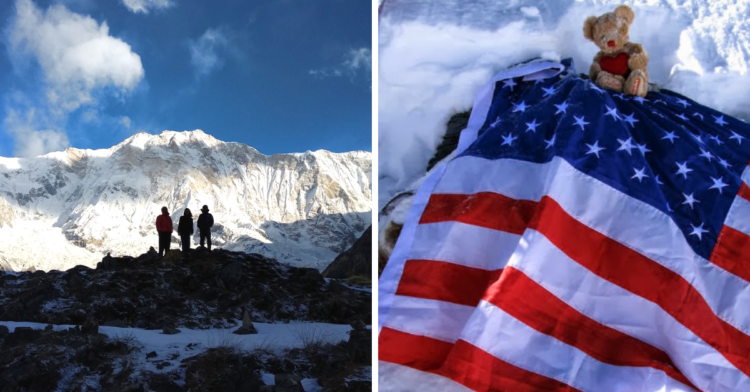As The Atlantic reported , the Paris Syndrome describes the physical and psychological reactions to learning that Paris is more of a bustling, harsh metropolis than its romantic image had led travelers to believe.
And considering how many bucket lists Mount Everest appears on, it seems like pure chance that the phenomenon came to be known as Paris Syndrome and not Everest Syndrome.
Not only is Mount Everest as perilous to climb as ever, but those with a mental image of its pristine natural beauty may be shocked to hear that they’re likely to see a large amount of litter and may even encounter a dead body on their way up.
And if the recent climate trend gripping the Himalayas continues, the likelihood of such a unnerving sight will rise even higher.
With spring having officially begun, the beginning of the climbing season for Mount Everest is now underway.

As the BBC reported , over 4,800 people have scaled the world’s highest mountain and each year sees more visitors who seek to be counted among them.
However, the sad reality is that not all of them will make it to the summit.

According to the BBC almost 300 climbers have died attempting to conquer the mountain and an estimated two-thirds of them remain buried in Everest’s ice.
Yet, as the melting of the mountain’s glaciers accelerates, that fraction is beginning to decrease.

British researchers found that the ice is showing a strangely warm minimum temperature of 26 degrees Fahrenheit, with the coldest ice in the area still ending up about three degrees warmer than the air temperature.
As a result, dead bodies that that once lay beneath layers of ice are now becoming revealed.

Most of these bodies are reappearing at the Khumbu Glacier, which is necessary to cross in order to climb Everest, but exposed hands and legs have also been reported at one of the base camps, which is called South Col.
Although many of these bodies have been revealed by climate change, the Khumbu Glacier can also expose long-lost bodies as it shifts.

But now, government workers tasked with removing the bodies have spotted both climbers who met their fates in recent years and ones who had perished years ago, but were inaccessible before.
Despite these removals, however, most climbers are reportedly mentally prepared to come across somebody’s remains.

Indeed, some bodies further up the mountain have stayed there for so long that they’ve been used as landmarks.
The most famous of these was a climber known as “green boots” who died near a cave that has now been named after him with his green boots facing the mountain trail.
According to the BBC , there’s a chance that his body has since been removed.
The idea of just leaving a visible corpse on Everest may be hard to understand, but there are a couple of reasons why that happens.

For one thing, recovering bodies is not only difficult and perilous work, which is more true the higher up the mountain a death occurred, but it’s also expensive.
As the BBC reported , retrieving a body could cost anywhere from $40,000 to $80,000 depending on the circumstances.
Sometimes, however, bodies are left where they fell out of respect.

As mountaineer Alan Arnette told the BBC, many climbers are so passionate about scaling mountains that in the event of their deaths, they’d prefer not to be removed from the mountain that claimed their lives.
And so, it’s often considered disrespectful to disturb their remains unless removal is conducted by their families’ request or because they’re blocking the climbing route.
h/t: BBC

















































